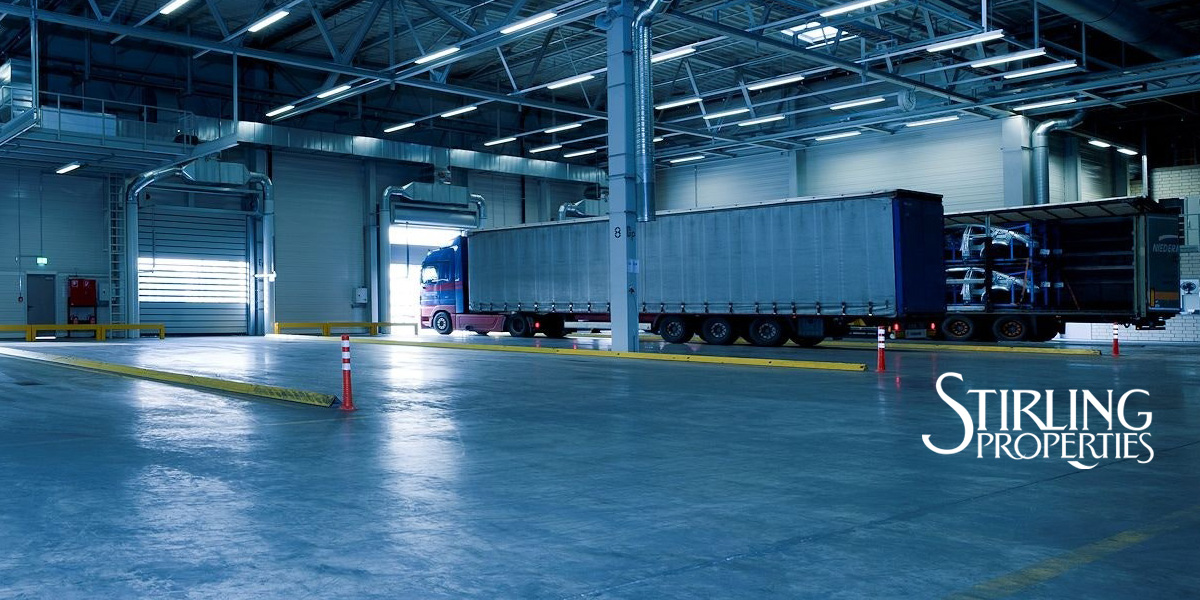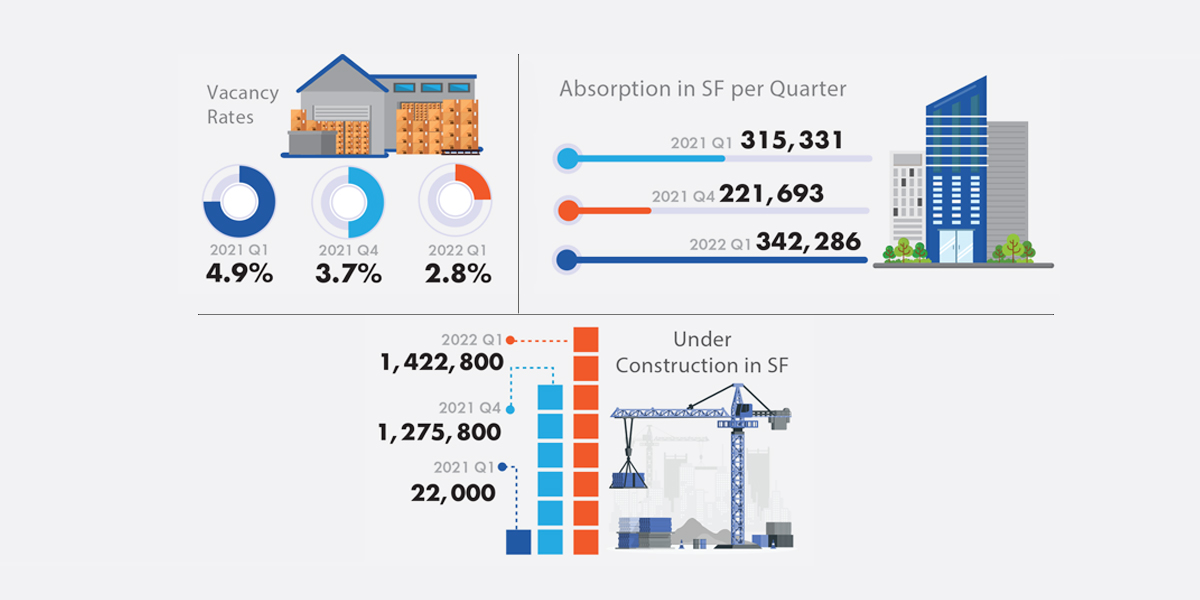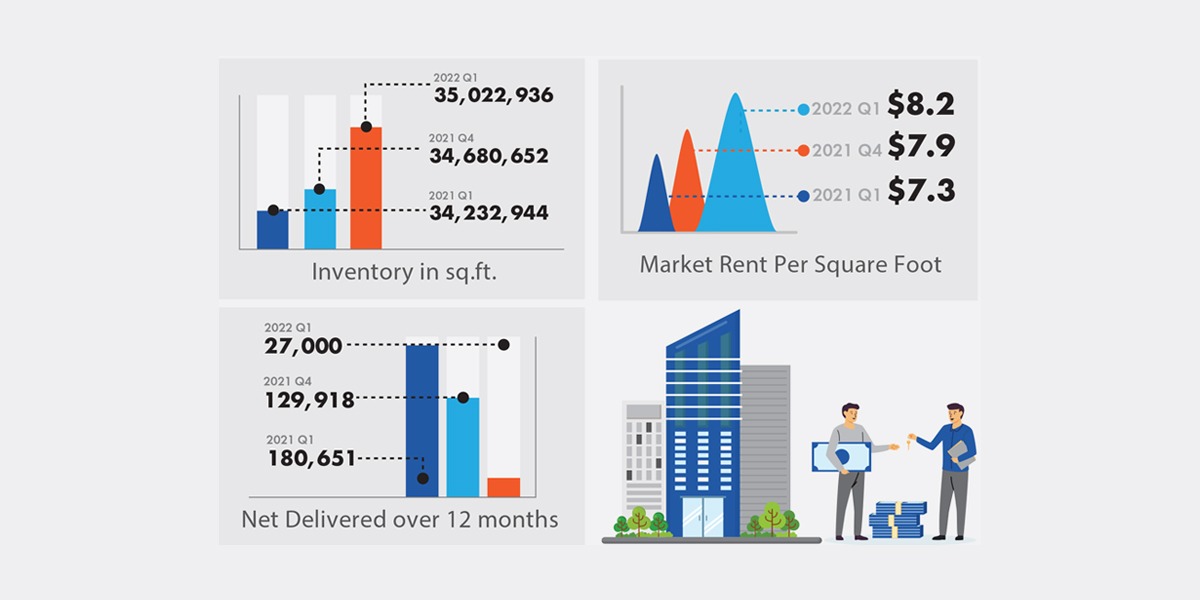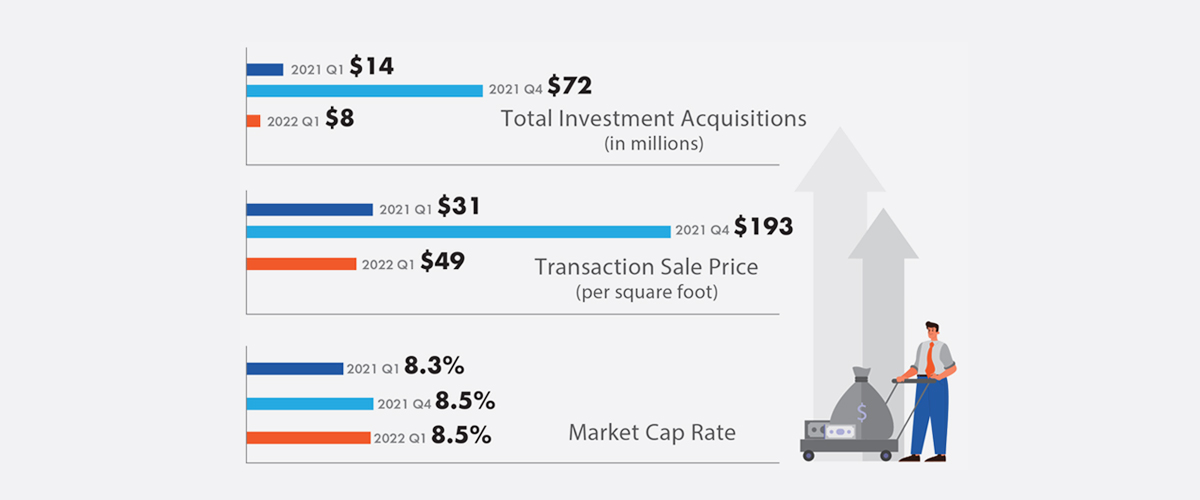Baton Rouge Industrial Market Insights
The industrial sector continues to be a bright spot in the Baton Rouge commercial real estate landscape, despite concerns around rising interest rates, surging inflation, and economic uncertainty. Key fundamentals are strong, including low vacancy rates, rising market rent rates, and decreasing cap rates.
Today’s sky-rocketing e-commerce sales, coupled with recent supply chain issues, have significantly increased the demand for warehouse and distribution facilities across the country. However, like most markets, the Baton Rouge area does not have an abundance of industrial space available for sale or lease. Scarcity is driving demand for these properties up, as well as transactional sale prices. Inventory is increasing, but not fast enough to meet demand. Here’s a more in-depth look at what’s happening in the Baton Rouge Industrial Market.
INDUSTRIAL MARKET DEMAND
Vacancy Rates:
- Vacancy rates for industrial space in the Baton Rouge market are typically lower than the national average and have consistently decreased since early last year.
- This low vacancy rate can be attributed to supply not keeping pace with demand. Historically, we haven’t had much speculative development in our market—any new construction is usually build-to-suit.
- In that trend, specific-use industrial properties are currently being built by national developers, and I believe this could cause an increase in vacancy over time. For instance, distribution space, which has not historically been a high-profile property type in our industrial market, has gained in popularity across the country, and we’re starting to see more distribution space come online here.
INDUSTRIAL MARKET SUPPLY
Inventory:
- The total square footage of inventory for industrial space in Baton Rouge is slowly increasing, though we are building more space relative to inventory than nationally.
- However, most of the new inventory coming online is earmarked—we do not see any speculative space for startups or new companies entering our market. So, inventory is increasing, but not fast enough to meet the demand.
Market Rent:
- Market rents per square foot for industrial space in Baton Rouge are steadily increasing, and our rental rates are rising faster than nationally. According to a recent report by the National Association of REALTORS (NAR), in the first quarter of 2022, market rent growth increased 11.7% from the previous year.
- The most significant factor driving up rental rates is the surge in construction costs. The cost of construction is, on average, 30% higher than it has been over the last couple of years, and I don’t see any sign of that coming down anytime soon.
- Moving forward, I think we will see a continued trend of rental rates increasing for a short period until the supply chain issues get resolved. Then we’ll see some stabilization.
INDUSTRIAL MARKET SALES TRANSACTIONS
Prices:
- Transaction sale prices per square foot for industrial space in Baton Rouge have been increasing over the past year and rising faster than the national average.
- One reason we’re seeing this record pricing—and it depends if we’re talking about vacant owner-occupied versus investment industrial properties—is the national demand for investment properties as a hedge against inflation. The other reason is simply a lack of supply.
- Also, money was cheap up until recently, so tenants became buyers. They were willing to pay more because of a lack of supply and took whatever space they could get. So, I think that’s a significant factor in why we see price increases.
- Looking ahead, I think we’ll see some stabilization in pricing. I don’t think it will continue to increase as we’ve seen. Interest rates have much to do with that, and banks’ willingness to lend money pushed prices up over the past year.
Cap Rates:
- According to NAR data, cap rates for industrial space in Baton Rouge have been inching up over the past year, and our cap rates are consistently higher than nationally.
- If you look at the data, rates have reportedly increased from 8.3% to 8.5% over the past year, so it’s a modest increase. However, in my opinion, this data does not reflect what’s really playing out in our market. If anything, we’ve seen a reduction in cap rates, not an increase.
- If you are accounting for every transaction and including every industrial property type, perhaps it might reflect an increase, but for the most part, the cap rates I’ve seen have been in the low eights or high sevens. For higher-quality industrial properties, I’ve seen cap rates from 6% to as low as 5.75%. It could simply be when this snapshot was taken that higher quality properties were not selling, or maybe the older and functionally obsolete properties that sold during this time are pulling the average market cap rate up.
- I think a bit of the exuberance of out-of-state investors will subside, and rising interest rates will affect that. But there’s still a lot of money out there, a lot of transactions going on, and a lot of people that wanted to defer doing exchanges. So, the days of the nine and ten percent cap rates are long gone.
For more information on the Baton Rouge industrial market or commercial real estate in the area, feel free to reach out to one of our experienced advisors or me.
Download the entire Baton Rouge Industrial Market Report
(Sources of data used: CoStar®, US Census Bureau, US Bureau of Labor Statistics, and US Bureau of Economic Analysis.)
Steve Legendre, CCIM
Regional Vice President
(225) 329-0295 / slegendre@stirlingprop.com
Learn more about Steve Legendre, CCIM





